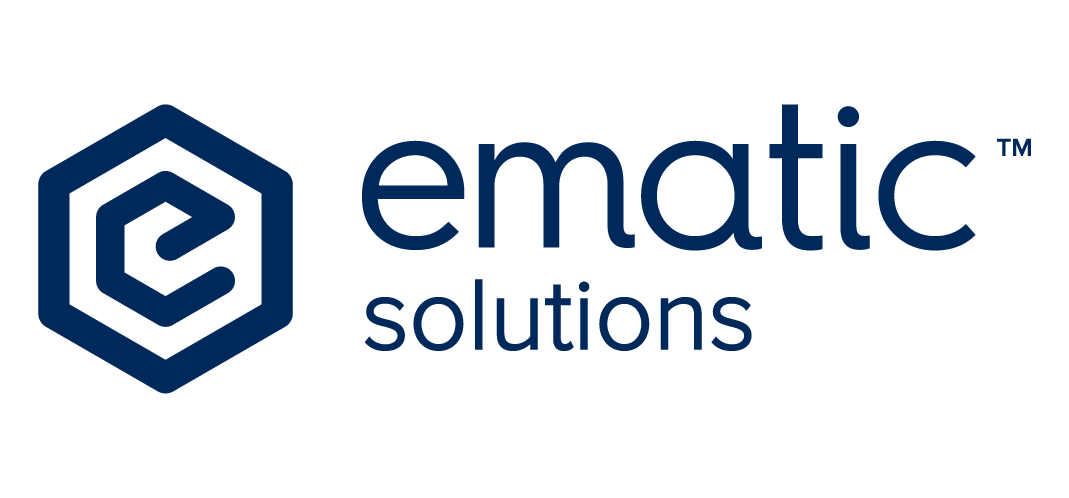Robots.txt: Use It To Allow or Disallow Pages

If you are serious about controlling how search engines interact with your website, mastering the robots.txt file is essential. This small but powerful text file tells crawlers which pages they can or cannot access — helping you protect sensitive areas and optimize your crawl budget. In this complete guide, you’ll learn how to configure robots.txt to allow everything, disallow everything, and use it strategically for better SEO performance. What Is Robots.txt in SEO? A robots.txt is a plain text file located at the root of your domain (e.g., https://www.yourdomain.com/robots.txt). It provides specific crawling instructions to web robots like Googlebot, Bingbot, and other search engine crawlers. In simple terms, it’s a set of “rules” that tells bots: Correct use of robots.txt ensures: Understanding Robots.txt Directives Every robots.txt file follows a simple rule structure that uses specific directives — or commands — to communicate with web crawlers. These directives tell search engines which areas of your website they can explore and which ones are off-limits. There are three main directives you’ll use in almost every robots.txt configuration: User-agent, Disallow, and Allow. Understanding what each one does — and how they work together — is key to preventing SEO mistakes. 1. User-agent: Identifying the Bot The User-agent directive specifies which crawler or search engine the rule applies to. Think of it as addressing a letter — you’re telling your instructions who they’re meant for. Here’s how it works: This line tells Google’s crawler to follow the rules that come after it. If you want the rule to apply to all crawlers — Googlebot, Bingbot, AhrefsBot, SemrushBot, and so on — you can use an asterisk (*): This wildcard symbol means “these instructions apply to every bot that visits my site.” You can also create specific rules for different bots. For example: In this case, Google is blocked from crawling /testing/ while Bing is blocked from /staging/. This flexibility is useful if you want to limit certain crawlers without affecting others — for instance, allowing Google to index your site fully while keeping lesser-known or aggressive bots out. 2. Disallow: Blocking Access to Specific Paths The Disallow directive tells crawlers which parts of your site they are not allowed to crawl. Syntax example: This prevents bots from accessing everything within the /private/ directory. If you use a single forward slash (/) like this: you’re blocking the entire website — meaning no crawler can access any page or resource. This is often used on development sites, staging servers, or temporary pages that you don’t want showing up in search results. On the other hand, if you leave the line blank: it means “no restrictions” — bots are free to crawl everything. Important SEO Note: The Disallow: rule only prevents crawling, not indexing. If another site links to a blocked page, Google may still index its URL, but without showing its content or description. To fully hide a page from search results, you will need to add a noindex meta tag or use password protection. 3. Allow: Granting Exceptions to a Rule The Allow directive is particularly helpful when you want to block a broader directory but make exceptions for certain files or pages within it. This setup blocks access to everything inside /private/, except for the file public-info.html. The Allow directive is primarily used by Googlebot and a few other modern crawlers that recognize it. While not officially supported by every search engine, it’s widely accepted and recommended for fine-tuning crawl control. Pro Tip: Order matters — always list your Allow directives after the related Disallow ones. This ensures search engines interpret your file correctly. Bonus: Other Optional Directives Although the three above are the most common, you might encounter or use other directives to enhance your robots.txt file: (Note: Googlebot doesn’t support this directive — instead, adjust crawl rate in Google Search Console.) These directives help make your robots.txt file more advanced and SEO-friendly, especially for large websites or multilingual setups. Putting It All Together Here’s a complete example of a robots.txt file that uses multiple directives effectively: What this means: This balanced configuration gives you precise control — keeping private sections hidden while ensuring that important content remains visible to search engines. Key Takeaways By mastering these directives, you can fine-tune how search engines interact with your website — protecting sensitive areas, improving crawl efficiency, and strengthening your SEO foundation. Curious About SEO? Contact Us Now for a Free Website Audit!
Why Investing in SEO Is a Smart Marketing Move in 2026
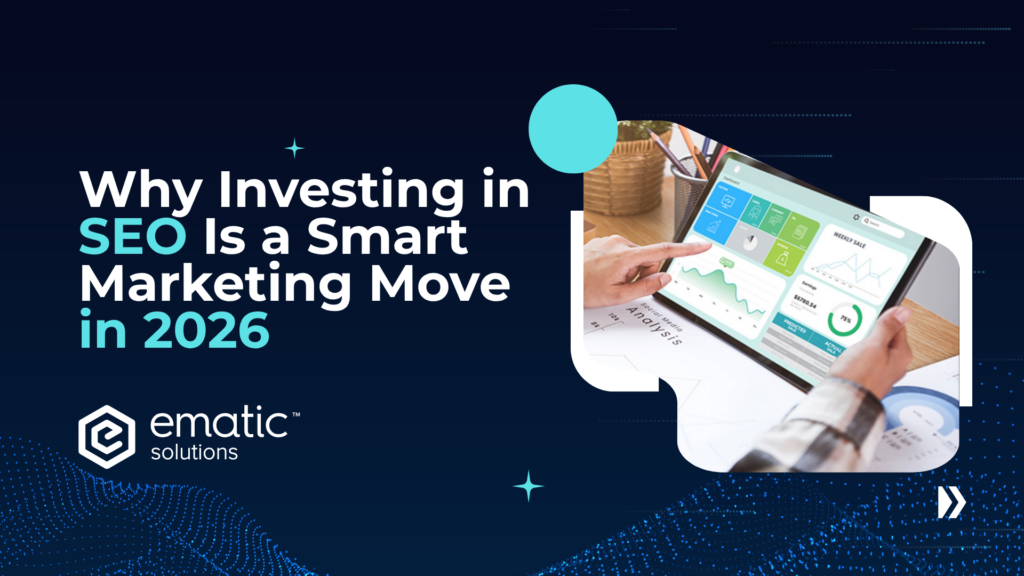
Digital marketing never stands still — and neither do your customers. Every year, the way people search, discover, and decide evolves. In 2026, that evolution is faster than ever. With tighter budgets, higher ad costs, and growing competition across every platform, brands are rethinking how they attract attention and build trust online. And that’s where SEO quietly proves its value. It’s not about choosing SEO instead of other marketing channels — it’s about making sure SEO is part of the mix. Because when your customers go looking for answers, products, or solutions, you want to make sure they can find you — not just your ads. SEO as a Foundation, Not a Fix There’s a misconception that SEO is something you “add on” when business slows down. In reality, it’s what helps every other channel perform better. When your website is optimized for search, it loads faster, explains your offering clearly, and helps customers take action. Those improvements don’t just help organic rankings — they also make your paid campaigns more efficient and your overall marketing more cohesive. At its core, SEO is about helping people (and search engines) understand your value. That’s not a one-time project — it’s an ongoing effort that supports your whole marketing ecosystem. How Search Has Evolved in 2026 Search engines have become far more intuitive — and user expectations have followed. People now expect instant, accurate, and personalized results. Google’s AI summaries, voice search, and smarter ranking algorithms mean businesses need more than just the right keywords. They need: In short, SEO today is less about gaming algorithms and more about creating a genuinely great online experience. Organic and Paid — Stronger Together There’s no “either-or” when it comes to SEO and paid media. Both have a place in a smart marketing strategy. Aspect Organic (SEO) Paid (PPC, Social Ads) Speed Builds gradually Generates instant visibility Longevity Lasting impact Stops when budget stops Cost Structure Upfront time, ongoing value Continuous spend Goal Sustainable growth Immediate reach Paid campaigns are great for quick traction — product launches, promotions, or testing messaging.SEO, meanwhile, helps you build credibility, reduce reliance on ads, and improve overall discoverability. The two aren’t competitors; they’re partners. When your organic presence is strong, your paid efforts perform better too. Why Businesses Still Need SEO in 2026 Even with all the changes in how people consume content, one thing remains true: people search before they decide. Whether it’s comparing software, finding a restaurant, or choosing a service provider, the discovery process still starts with a search engine. That’s why SEO continues to matter — because it meets customers where their intent already is. Here’s what that means for your business: It’s not about chasing rankings — it’s about being part of the conversation your customers are already having. How to Approach SEO Without Overcomplicating It You don’t need to overhaul your entire website to get started. A few focused steps can make a big difference: Good SEO supports your broader digital marketing strategy, not the other way around. Avoiding the Common SEO Traps Many businesses fall into one of two extremes: The best approach sits in the middle — integrating SEO into your overall marketing plan. That means combining it with content, paid media, CRM, and analytics for a complete growth picture. It’s about creating synergy, not silos. SEO Is a Smart Long-Term Play SEO isn’t about replacing other marketing efforts — it’s about making them stronger.It keeps your business visible in the moments that matter most, complements your paid strategy, and builds credibility that compounds over time. No matter if you’re scaling or stabilizing, investing in SEO today helps your brand stay discoverable tomorrow. And if you’re unsure where to start, Ematic Solutions’ free SEO audit can help you get a clear picture of your site’s health and identify what improvements will bring the biggest impact. No hard sell — just useful insights to guide your next move. Frequently Asked Questions (FAQs)
Riding the Waves: Understanding Google Ranking Fluctuations
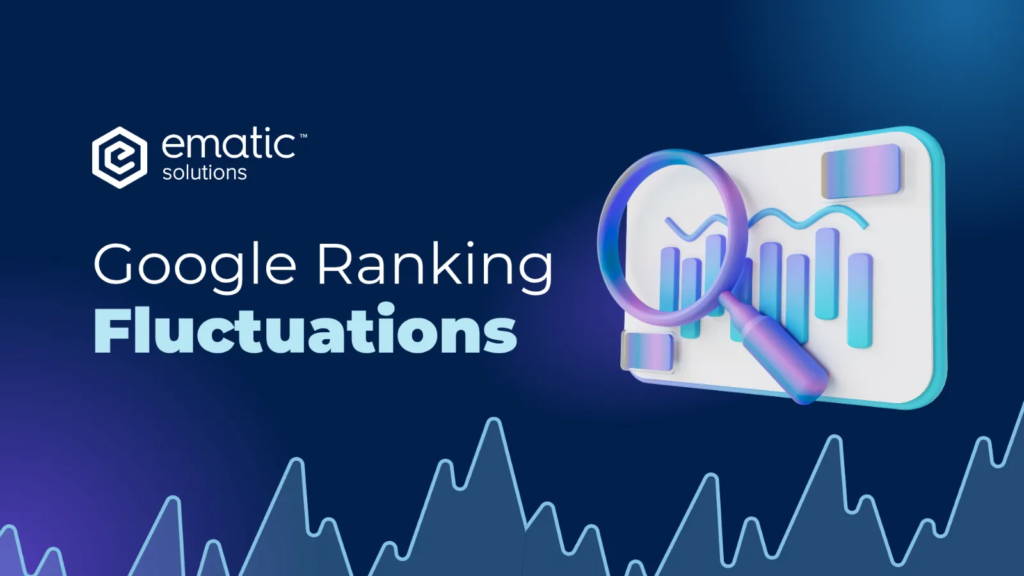
Google rankings aren’t static—they shift daily due to algorithm updates, competitor activity, and user behavior. This guide explains why rankings fluctuate, how to diagnose sudden drops, and what strategies can help stabilize your SEO visibility over time.
AI Search vs. Traditional Search: What It Means for SEO
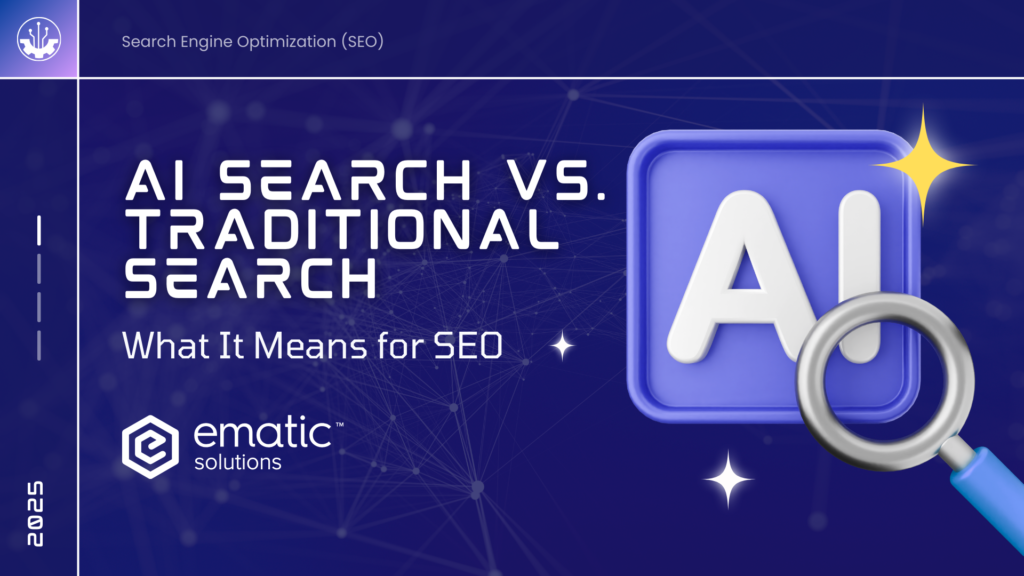
Search has always been at the heart of digital marketing. For years, Google’s traditional search engine has dominated the way people find information online. Marketers, businesses, and content creators built their SEO strategies around ranking in the 10 blue links of Google’s search results. But the landscape is changing. With the rise of AI-powered search—like Google’s Search Generative Experience (SGE), Microsoft’s Copilot (formerly Bing Chat), and other AI-driven platforms—the way users interact with search results is evolving. So what does this shift mean for SEO? Should businesses still focus on traditional SEO, or is AI search the future? Let’s dive deep. What is Traditional Search? Traditional search engines, like Google and Bing (pre-AI integration), are based on indexing, crawling, and ranking websites. When you type in a query: The familiar results page (SERP) often includes: In short: traditional SEO is about optimizing your website so search engines find, index, and rank it higher than your competitors. What is AI Search? AI search represents a paradigm shift. Instead of simply showing a list of links, AI search engines generate direct answers using large language models (LLMs). For example: AI search doesn’t just retrieve, but rather, it interprets. It uses natural language processing (NLP) to understand intent and provide contextual, personalized, and synthesized responses. Examples of AI-driven search features: This approach reshapes user behavior: people are less likely to scroll through 10 results when they already get a synthesized answer. AI Search vs. Traditional Search: Key Differences Here’s a side-by-side comparison of how AI search differs from traditional search: Feature Traditional Search AI Search Results format List of links (SERP) Conversational answer, sometimes with citations User experience Click-through to websites for information Information summarized directly in the search Ranking factors Keywords, backlinks, authority, on-page SEO Context, semantic meaning, entity recognition, relevance Traffic flow High click-through to websites Reduced clicks (AI answers in search) Opportunities for brands Ranking on page 1, featured snippets, ads Being cited in AI responses, content visibility within summaries Challenge Competing for top 10 rankings Risk of “zero-click searches” where users don’t visit websites How AI Search is Changing User Behavior? This means SEO strategies must evolve: it’s no longer just about ranking on Google’s page one, but it’s about being the source AI tools pull information from. What This Means for SEO? The good news: SEO isn’t dead—it’s evolving. Here’s what marketers and businesses need to consider: 1. Content Quality > Keyword Stuffing AI prioritizes context and authority over simple keyword matches. Your content must be: 2. Topical Authority Matters More Websites that demonstrate expertise in a niche are more likely to be cited by AI search engines. Building topic clusters and covering subjects in depth is crucial. 3. Structured Data is Essential Schema markup helps AI understand your content better. This increases the chance of being featured in AI responses. 4. Brand Visibility Beyond Links AI search may not drive as much direct traffic, but brand mentions, citations, and authority signals still matter. Even without clicks, being cited builds trust. One effective way to strengthen these signals is through backlink building. Strong backlinks boost your authority and improve your chances of being referenced in AI results. Learn more in our guide: How Backlinks Can Boost Your Organic Traffic. 5. Zero-Click Search is Here to Stay Just like Google featured snippets, AI search will create more zero-click results. Your strategy must balance visibility + conversions even if fewer people land on your site. Read more on Zero-Click Searches & AI Overviews Impact. Future of SEO in an AI-First World Looking ahead, SEO will likely become a mix of traditional optimization and AI-centric strategies. We’re moving beyond traditional SEO into AEO and GEO, which are the two emerging approaches that prioritize visibility within AI-driven answers and generative overviews. How to Prepare Your Business for AI Search? Ready to Future-Proof Your SEO? At Ematic Solutions, we specialize in helping businesses navigate the changing world of SEO. Our team of SEO experts can help you: Don’t let AI search leave you behind. Contact Ematic Solutions today to future-proof your SEO strategy.
Conversational SEO: The Future of Search in 2026

SEO is changing faster than ever, and by 2026, the biggest difference-maker won’t be complex technical tricks or keyword counts, it will be about real conversations. Think about it: voice search is everywhere, AI chatbots are becoming our go-to assistants, and new search engines are generating full answers instead of just lists of links. All of this is pushing brands to do one thing: optimize their content for natural, human-like chat. We call this: Conversational SEO. Why Your Old Way of Searching Is Irrelevant People simply don’t search the way they did a few years ago. No one types the short, clunky phrases anymore. Instead of typing “best running shoes 2026,” we ask full, detailed questions: Today’s AI-powered search engines are brilliant at understanding the intent behind those questions. They don’t just point you to a website; they generate a clear, direct answer right on the screen. The takeaway? Your business needs to make content that directly matches how people naturally speak and ask for help. Voice and AI are the New Search Bar By 2026, talking to your technology will be completely mainstream. Whether it’s your smart speaker, your car assistant, or your wearable tech, users are speaking their searches instead of typing. At the same time, AI assistants (like the ones from Google, OpenAI, or Perplexity) are flipping the script on how we find information. We don’t want to scroll through a never-ending list of blue links; we want an instant, direct answer. For your content, this means the stuff that wins isn’t the stuff jammed full of keywords; it’s the content that answers the user’s question directly, clearly, and in a friendly, conversational tone. Your 5-Step Game Plan for Conversational SEO Ready to make the shift? Here’s how you prepare your content to win in the new era of search: Final Thought Conversational SEO isn’t some fleeting trend; it’s about survival. As AI takes over discovery, the old rules of SEO won’t work anymore. Brands that learn to craft content that sounds like a helpful chat instead of a dry textbook will earn more visibility, build more engagement, and ultimately gain more trust. The future of search belongs to the businesses that master the art of being genuinely helpful. If your content can answer like a trusted friend, you’ll be the one winning those conversations. Are you ready to stop writing for search engines and start writing for people? Contact us now for more details!
Zero-Click Searches & AI Overviews Impact

Search is evolving fast. With zero-click searches and Google’s AI Overviews dominating results, clicks are no longer guaranteed. Learn how these changes impact SEO and the strategies you need in 2025 to stay visible, authoritative, and competitive.
Dofollow vs Nofollow Links: What’s the Difference?
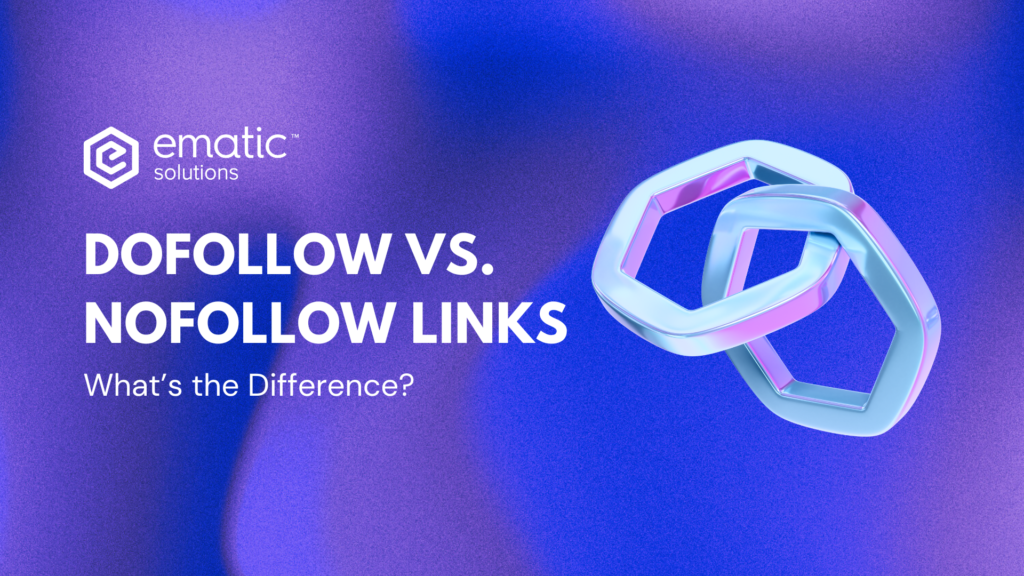
If you have spent any time digging into SEO, you have probably come across the terms dofollow and nofollow links. At first glance, they might seem like just technical jargon, but understanding the difference between these two link types is crucial if you care about your website’s rankings, visibility, or authority. Let us break it all down so you can confidently use both link types to your advantage. What Are Dofollow and Nofollow Links? In simple terms, both dofollow and nofollow are attributes you can assign to hyperlinks. They tell search engines whether or not to “follow” a link and pass SEO value (also called link juice) to the target page. They look almost identical to users, but under the hood, they send very different signals to search engines like Google. Why Does This Matter for SEO? Backlinks are one of the most important ranking factors in SEO. When high-authority websites link to your content using dofollow links, they are essentially vouching for your site’s credibility. That can improve your rankings and increase organic traffic. But not all backlinks help you equally, and that is where the dofollow vs nofollow distinction becomes key. Quick Comparison: Dofollow vs Nofollow Links Here is a side-by-side breakdown of how these two link types work: Feature/Aspect Dofollow Links Nofollow Links Passes link equity (SEO value) ✅ Yes ❌ No Default link type ✅ Yes (unless specified otherwise) ❌ No (must be manually added) Search engines follow the link? ✅ Yes ❌ No (or with reduced priority depending on engine) Used for paid/sponsored content? ❌ No (violates Google guidelines) ✅ Yes (required by Google) Influences rankings? ✅ Directly ⚠️ Indirectly (e.g., through referral traffic) HTML Example <a href=”https://ematicsolutions.com”>Example</a> <a href=”https://ematicsolutions.com” rel=”nofollow”>Example</a> Real-Life Examples of Each Let us bring this to life with two quick examples. Example of Dofollow Link If a blog writes a review about your business and links to your homepage using a dofollow link, that backlink boosts your domain authority and can help your app rank better in search results. Example of Nofollow Link If you drop a link to a website in a comment section or on a forum, that link is usually marked as nofollow. It will not pass SEO value, but it could still drive valuable referral traffic if readers click on it. When to Use Dofollow vs Nofollow Most of the time, you do not need to manually add the dofollow attribute as it is the default. But knowing when to use or expect a nofollow link is important. Use dofollow when: Use nofollow when: Do Nofollow Links Have Any SEO Value? Short answer: yes, but not in the same way dofollow links do. While they do not directly boost your rankings, nofollow links can: So, do not dismiss them, especially if they come from high-traffic or niche-relevant platforms. How to Check If a Link Is Dofollow or Nofollow You do not need to know how to code. Here are two easy ways: 1. Use a Chrome Extension You can install any SEO-related browser extension that highlights nofollow links on a webpage. These tools typically outline or label nofollow links visually so you can spot them at a glance. 2. Right-click and Inspect Right-click the link → Inspect → Look for rel=”nofollow” in the HTML tag. Where You Commonly Find Nofollow Links Not all links are created equal, and some platforms automatically apply the nofollow tag. Here are a few: Platform/Source Link Type Blog comment sections Nofollow Reddit Nofollow Quora Nofollow YouTube descriptions Nofollow Sponsored blog posts (with proper disclosure) Nofollow Editorial links from blogs/news Dofollow (usually) Best Practices for Link Building Want to build a healthy backlink profile? Focus on quality, not just quantity. Here is how: Use Both Dofollow and Nofollow Links Strategically Dofollow links pass SEO value, while nofollow links (mostly) do not, but both serve a purpose. Think of dofollow as your SEO fuel, and nofollow as your traffic insurance. Smart SEO is not just about chasing one or the other. It is about knowing how they work, using them responsibly, and focusing on long-term value over quick wins. To boost your site rankings, both on-page and off-page SEO strategies is important. If you need help building a strong, ethical link profile or developing a scalable SEO strategy that works, Ematic Solutions can support your digital growth with data-driven expertise and results-focused execution. Want to Know More About SEO Link Building? Contact Us Now for a Free Website Audit!
Unlock Your SEO Potential: Structured Data Markup

In the dynamic landscape of Search Engine Optimization (SEO), mastering every available advantage is key to success. Among the most potent, yet frequently underutilized, strategies is Structured Data Markup. This isn’t merely a technical add-on; it’s a pivotal enhancement that can dramatically elevate your website’s visibility and user engagement within search engine results. What is Structured Data Markup? At its core, structured data is a standardized format designed to provide explicit, machine-readable clues about your webpage’s content to search engines like Google. While search engines employ sophisticated algorithms to understand web content, supplementing your pages with structured data enables them to interpret your information with greater precision and depth. For instance, on a recipe page, structured data can explicitly convey details such as specific ingredients, precise cooking times, and even calorie counts, allowing search engines to categorize and present this information accurately. The Transformative Power of Rich Results The most immediate and visually striking benefit of implementing structured data is the eligibility for rich results (also known as rich snippets) in Search Engine Results Pages (SERPs). These enhanced listings transcend the traditional blue link and descriptive text, offering visually engaging and highly informative additions that capture user attention: These rich results ensure your listing stands out in a crowded search landscape, significantly increasing the likelihood of user interaction. Industry examples, such as Rotten Tomatoes and The Food Network, have reported substantial increases in click-through rates and website visits post-structured data implementation, underscoring its tangible impact on user acquisition. How Structured Data Elevates Your SEO Strategy While structured data markup is technically not a direct ranking factor, its influence on your overall SEO performance is profound and multifaceted: Exploring Key Types of Schema Markup The comprehensive vocabulary for structured data is provided by Schema.org, an open-source, collaborative project that hosts an extensive library of schemas—currently numbering 797 types and 1,453 properties. While the list is vast, here are some of the most impactful and widely adopted schema types for SEO: Schema Type Description/Purpose Enhanced Search Result Example Article Schema Optimizes news articles, blog posts, and general editorial content for rich results and inclusion in Google News. A prominent news article listing with a larger image, publication date, and author. Product Schema Essential for e-commerce, enabling the display of vital product details like price, availability, and customer reviews. Product listing showing star ratings, price, “In Stock” status, and a direct link to purchase. FAQPage Schema Structures frequently asked questions (FAQs) and their answers, allowing them to appear as interactive rich snippets. An expandable section directly below the search result with common questions and their answers. Local Business Schema Crucial for local SEO, providing comprehensive business details such as name, address, phone number, and opening hours. A “Knowledge Panel” in the SERP sidebar with business hours, address, phone, map, and links for directions. Event Schema Highlights essential event details including dates, times, locations, and ticket information. An event listing displaying the event name, date, time, location, and sometimes ticket availability or a link to buy tickets. Review Schema Enables the display of star ratings and snippets of user reviews for products, services, or organizations. Search result showing prominent gold star ratings (e.g., “4.5 out of 5 stars”) directly under the title. HowTo Schema Structures step-by-step guides and instructions, making them eligible for visually distinct rich results. A numbered list of steps appearing directly in the search result, guiding users through a process (e.g., “How to change a tire”). Recipe Schema Enriches recipe pages with critical information such as cooking times, specific ingredients, nutritional facts, and ratings. A recipe card with an image, cooking time, calorie count, and star ratings, allowing filtering by specific criteria. VideoObject Schema Optimizes embedded or hosted videos for Google Video Search and increases their chances of appearing in featured snippets. A video thumbnail in the search results with duration, upload date, and a brief description, often appearing in video carousels. Organization Schema Provides essential institutional details for businesses and organizations, including official name, logo, and contact info. A “Knowledge Panel” for a brand or company, displaying its logo, official website, social profiles, and brief company information. Table 1 showcase the common types of schema markups Understanding Structured Data Formats: Technical Implementation Google officially supports three primary formats for embedding structured data into your web pages: It’s also worth noting that in certain advanced scenarios, it’s possible to combine JSON-LD and Microdata by linking them through @id attributes in JSON-LD and itemid attributes in Microdata, which can sometimes help reduce overall HTML size. Essential Implementation and Validation Practices To ensure your structured data is correctly implemented, free of errors, and eligible for those highly desirable rich results, Google provides indispensable tools and best practices: Structured data markup is unequivocally a fundamental and increasingly vital component of a robust modern SEO strategy. Its purpose is not to manipulate search engine rankings, but rather to empower search engines with a deeper, more accurate understanding of your content. By embracing structured data, you unlock the potential for significantly enhanced search visibility, improved user engagement through compelling rich results, and ultimately, greater success in the ever-competitive digital landscape. Invest in structured data, and watch your search performance flourish. Curious About SEO? Contact Us Now for a Free Website Audit!
Apa Itu SEO? 5 Sebab Utama Kenapa Anda Perlukan SEO

Dalam dunia digital hari ini, memiliki laman web sahaja tidak mencukupi untuk menonjol dalam kalangan pesaing. Anda perlu memastikan laman web anda mudah ditemui oleh bakal pelanggan — di sinilah kepentingan SEO. Apa itu SEO? SEO ialah singkatan bagi Search Engine Optimization, atau dalam Bahasa Melayu, Pengoptimuman Enjin Carian. Ia merujuk kepada teknik dan strategi yang digunakan untuk meningkatkan kedudukan laman web anda di halaman keputusan enjin carian seperti Google, Bing atau Yahoo. Contohnya, jika anda menjual pakaian wanita dan seseorang mencari “baju kurung moden” di Google, SEO membantu laman web anda muncul pada kedudukan teratas carian tersebut — sekaligus meningkatkan peluang laman web anda dikunjungi dan barangan anda dibeli. Apa Beza SEO dan Iklan Berbayar (SEM)? Ramai yang keliru antara SEO dan SEM (Search Engine Marketing). Bezanya ialah: Perbandingan SEO vs SEM Aspek SEO (Search Engine Optimization) SEM (Search Engine Marketing / Iklan Berbayar) Jenis Trafik Organik (percuma) Berbayar (perlu bajet iklan) Kos Per Klik (CPC) Tiada – tidak perlu bayar bila orang klik Perlu bayar setiap kali iklan diklik (Pay-per-click) Masa untuk Hasil Ambil masa (3-6 bulan untuk kesan ketara) Hasil segera sebaik sahaja iklan diaktifkan Jangka Masa Kesan jangka panjang selagi kandungan kekal relevan Hanya aktif selagi anda bayar Kebolehpercayaan Lebih dipercayai oleh pengguna kerana bukan ‘iklan’ Mungkin dilihat sebagai promosi atau jualan Kawalan Penargetan Kurang kawalan spesifik ke atas siapa lihat laman anda Kawalan penuh – boleh sasarkan lokasi, umur, minat, dll. Contoh Platform Google Search, Bing, Yahoo Google Ads, Bing Ads, Facebook Ads 5 Sebab Utama Kenapa Anda Perlukan SEO 1. Menarik Trafik Berkualiti Tanpa Bayaran SEO membantu laman web anda muncul dalam carian yang relevan dengan produk atau perkhidmatan yang anda tawarkan. Ini bermakna pelawat yang datang ke laman anda adalah mereka yang memang mencari apa yang anda jual — menjadikan trafik anda lebih berkualiti berbanding iklan berbayar yang disasarkan secara umum. 🔍 Contoh: Seseorang yang mencari “shampoo untuk rambut gugur” kemungkinan besar sedang mempertimbangkan untuk membeli produk tersebut — dan SEO membolehkan laman anda dijumpai pada masa yang tepat. 2. Meningkatkan Kredibiliti dan Kepercayaan Kebanyakan pengguna percaya bahawa laman web yang muncul di halaman pertama Google adalah lebih dipercayai dan profesional. Kedudukan tinggi dalam carian memberi isyarat bahawa laman anda relevan, dipercayai dan mempunyai kandungan berkualiti. ✅ SEO bukan sekadar ranking — ia juga tentang membina keyakinan pelanggan secara tidak langsung. 3. Lebih Jimat Berbanding Iklan Berbayar Berbeza dengan iklan seperti Google Ads atau Facebook Ads yang memerlukan bayaran berterusan, SEO adalah pelaburan jangka panjang. Setelah laman anda mencapai kedudukan yang baik, anda akan terus menerima trafik tanpa perlu membayar setiap klik. 💡 SEO = kos efektif + hasil berpanjangan 4. Memberi Keuntungan Jangka Panjang Hasil daripada SEO tidak berlaku serta-merta, tetapi ia berkesan dalam jangka masa panjang. Dengan strategi yang betul, laman anda boleh mengekalkan kedudukan yang tinggi untuk kata kunci (keyword) penting — memberikan aliran trafik konsisten selama bertahun. 📈 SEO yang konsisten membantu anda membina jenama dan pasaran secara berterusan. 5. Membantu Anda Faham Pelanggan Anda Melalui SEO, anda dapat mengenal pasti kata kunci (keyword) yang digunakan oleh pelanggan anda, jenis kandungan yang mereka gemari, dan corak tingkah laku mereka di laman web. Data ini boleh digunakan untuk memperbaiki pengalaman pengguna dan meningkatkan kadar penukaran (conversion rate). 🎯 Bila anda tahu apa yang pelanggan cari, anda boleh beri mereka apa yang mereka perlukan — lebih cepat dan tepat. Buat Pelaburan Digital Yang Bijak dengan SEO SEO bukan lagi satu pilihan, tetapi ia adalah satu keperluan dalam dunia perniagaan digital yang kompetitif hari ini. Dengan strategi SEO yang baik, anda bukan sahaja dapat meningkatkan trafik dan jualan, malah dapat membina jenama yang kukuh dan dipercayai. Nak tahu lebih lanjut tentang SEO untuk laman web anda? Hubungi kami untuk konsultasi secara percuma hari ini.
Beyond the Buzzwords: Why Technical SEO is Your Website’s Silent Powerhouse
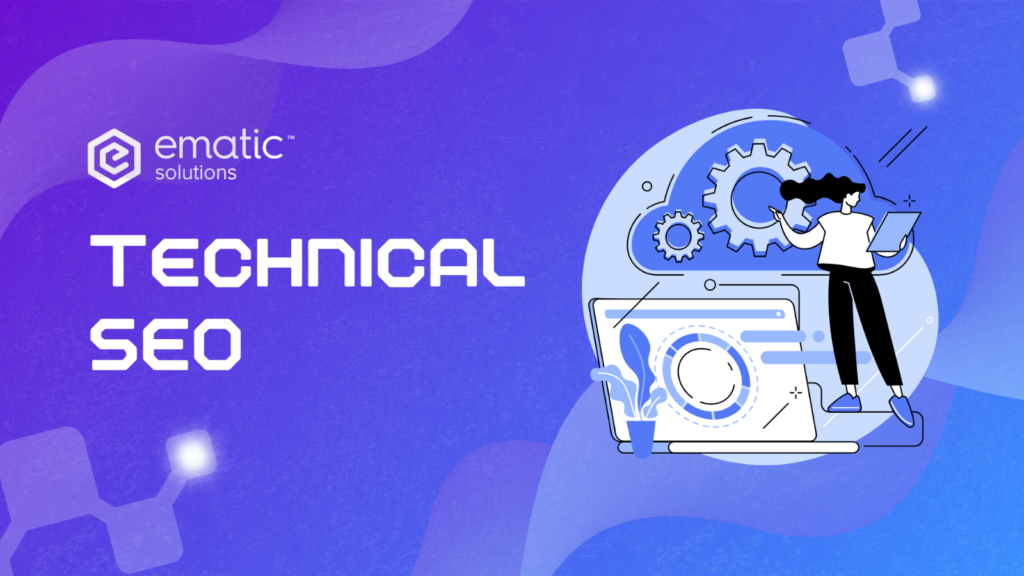
In the bustling world of digital marketing, “SEO” is a term thrown around frequently. We talk about keywords, content, and backlinks, but often, a crucial piece of the puzzle remains in the shadows: Technical SEO. Think of your website as a high-performance car. You can have the most beautiful paint job (amazing content) and powerful engine (strong backlinks), but if the chassis is rusted, the fuel lines are clogged, or the navigation system is broken, that car is not going to win any races. Technical SEO is the equivalent of ensuring your website’s underlying mechanics are finely tuned for peak performance in the search engine arena. So, what exactly is this “technical” wizardry, and why should you care? Let’s break it down. What is Technical SEO? The Unsung Hero of Search Rankings Technical SEO encompasses all the optimizations you perform on your website’s infrastructure to improve its crawlability, indexability, and overall user experience for search engines. Unlike on-page SEO (optimizing content) or off-page SEO (building links), technical SEO focuses on the how your website works, not just what it says. In essence, it’s about making it as easy as possible for search engine bots (like Googlebot) to: To illustrate why these steps are so crucial, consider this common scenario seen in Google Search Console, highlighting the reasons why pages on a website might fail to get indexed by Google: As you can see, issues like being blocked by robots.txt, redirect errors, or the presence of a ‘noindex’ tag directly prevent valuable content from appearing in search results – the very problem technical SEO aims to solve. Why is Technical SEO So Important? The impact of technical SEO on your search rankings and overall online success is profound: Key Pillars of a Robust Technical SEO Strategy Ready to dive into the specifics? Here’s a checklist of critical technical SEO elements to consider: Technical SEO Element Why It Matters Site Speed & Core Web Vitals Faster load times improve user experience and are crucial ranking factors (LCP, INP, CLS) Mobile-Friendliness Google uses mobile-first indexing, so a responsive design is vital for ranking and user experience Site Architecture & Navigation A logical structure helps search engines and users find and understand your content efficiently HTTPS (Website Security) An SSL certificate is a Google ranking signal, encrypts data, and builds user trust XML Sitemaps Provides a roadmap for search engine bots, ensuring all important pages are discovered and indexed Robots.txt File Controls which parts of your site search engine crawlers can or cannot access, preventing indexing of irrelevant content Canonicalization Prevents duplicate content issues by telling search engines the preferred version of a page Structured Data (Schema) Helps search engines understand your content’s context, potentially leading to rich snippets and better visibility Crawl Errors & Broken Links Fixing these maintains site health, improves crawl efficiency, and prevents negative user experiences Hreflang (Multilingual) Guides search engines to serve the correct language/region version of your content to users Table 1 showcase the checklist of critical technical SEO elements Technical SEO is not glamorous, but it’s the bedrock of a successful online presence. Neglecting it is like building a skyscraper on quicksand – no matter how impressive the building, it’s destined to fall. By prioritizing your website’s technical health, you empower search engines to discover, understand, and rank your content effectively, paving the way for increased organic traffic and sustainable growth. Ready to give your website the technical tune-up it deserves? Start by auditing your site and identifying areas for improvement. The investment will undoubtedly pay off in the long run! Curious About SEO? Contact Us Now for a Free Website Audit!
